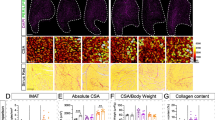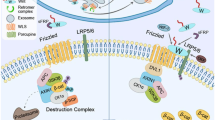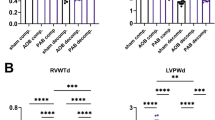Abstract
Purpose
The nitrofen model of congenital diaphragmatic hernia (CDH) is widely used to investigate the pathogenesis of CDH. However, the exact pathomechanism of the diaphragmatic defect is still unclear. Diaphragmatic muscularization represents the last stage of diaphragmatic development. Myogenic differentiation 1 (MyoD) and myogenic factor 5 (Myf5) play a crucial role in muscularization. MyoD−/− : Myf5+/− mutant mice show reduced diaphragmatic size, whereas MyoD+/− : Myf5−/− mutants have normal diaphragms. We designed this study to investigate diaphragmatic gene expression of MyoD and Myf5 in the nitrofen CDH model.
Methods
Pregnant rats received nitrofen or vehicle on day 9 of gestation (D9), followed by cesarean section on D18 and D21. Fetal diaphragms (n = 40) were micro-dissected and divided into CDH group and controls. MyoD and Myf5 mRNA-expression were determined using Real-time PCR. Immunohistochemistry was performed to evaluate protein expression of MyoD and Myf5.
Results
Relative diaphragmatic mRNA expression levels and immnunoreactivity of MyoD were decreased in the CDH group on D18 and D21. Myf 5 mRNA and protein expression were not altered in the CDH group.
Conclusion
This is the first study showing that MyoD expression is selectively decreased in the diaphragm muscle in the nitrofen model of CDH.


Similar content being viewed by others
References
Gaxiola A, Varon J, Valladolid G (2009) Congenital diaphragmatic hernia: an overview of the etiology and current management. Acta Paediatr 98:621–627
Keijzer R, Puri P (2010) Congenital diaphragmatic hernia. Semin Pediatr Surg 19:180–185
Stege G, Fenton A, Jaffray B (2003) Nihilism in the 1990s: the true mortality of congenital diaphragmatic hernia. Pediatrics 112:532–535
Clugston RD, Greer JJ (2007) Diaphragm development and congenital diaphragmatic hernia. Semin Pediatr Surg 16:94–100
Mortell A, Montedonico S, Puri P (2006) Animal models in pediatric surgery. Pediatr Surg Int 22:111–128
Clugston RD, Zhang W, Greer JJ (2008) Gene expression in the developing diaphragm: significance for congenital diaphragmatic hernia. Am J Physiol Lung Cell Mol Physiol 294:665–675
Dingemann J, Doi T, Ruttenstock E, Puri P (2010) Downregulation of Fgfrl1 contributes to the development of the diaphragmatic defect in the nitrofen model for congenital diaphragmatic hernia. Eur J Pediatr Surg (in press)
Dingemann J, Doi T, Ruttenstock E, Puri P (2010) Expression of the Wilm’s tumor gene WT1 during diaphragmatic development in the nitrofen model for congenital diaphragmatic hernia. Pediatr Surg Int (in press)
Inanlou MR, Dhillon GS, Belliveau AC, Reid GA, Ying C, Rudnicki MA, Kablar B (2003) A significant reduction of the diaphragm in mdx:MyoD−/− (9th) embryos suggests a role for MyoD in the diaphragm development. Dev Biol 261:324–336
Kablar B, Rudnicki MA (2000) Skeletal muscle development in the mouse embryo. Histol Histopathol 15:649–656
Inanlou MR, Kablar B (2003) Abnormal development of the diaphragm in mdx:MyoD−/− (9th) embryos leads to pulmonary hypoplasia. Int J Dev Biol 47:363–371
Holder AM, Klaassens M, Tibboel D, de Klein A, Lee B, Scott DA (2007) Genetic factors in congenital diaphragmatic hernia. Am J Hum Genet 80:825–845
Rudnicki MA, Schnegelsberg PN, Stead RH, Braun T, Arnold HH, Jaenisch R (1993) MyoD or Myf-5 is required for the formation of skeletal muscle. Cell 75:1351–1359
Babiuk RP, Greer JJ (2002) Diaphragm defects occur in a CDH hernia model independently of myogenesis and lung formation. Am J Physiol Lung Cell Mol Physiol 283:L1310–L1314
Author information
Authors and Affiliations
Corresponding author
Rights and permissions
About this article
Cite this article
Dingemann, J., Doi, T., Ruttenstock, E. et al. The role of primary myogenic regulatory factors in the developing diaphragmatic muscle in the nitrofen-induced diaphragmatic hernia. Pediatr Surg Int 27, 579–582 (2011). https://doi.org/10.1007/s00383-010-2834-8
Published:
Issue Date:
DOI: https://doi.org/10.1007/s00383-010-2834-8




